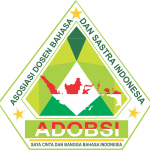Ritual Penusur Sira dan Dokan Arts Festival sebagai Daya Tarik Eisata di Desa Dokan, Kabupaten Karo, Sumatera Utara
Abstract
This study aims to determine the ritual of Penusur sira in the tradition of the Dokan village community as an adaptation to the environment, to find out the shape of the Siwaluh Jabu traditional house that adapts to natural conditions and to know the appearance of the Dokan Art Festival in preserving and introducing local culture. This research uses a descriptive method with a qualitative approach with socio-cultural observations of the community to answer the research objectives. The results of the study show that the ritual of the ancestor sira and the traditional house of Siwaluh Jabu are local wisdom that must be maintained and preserved so that they do not become extinct along with the times. The Karo community and several art activists innovated to introduce Dokan village by holding a Dokan Art Festival. This is in addition to maintaining the existence of local culture but also becomes an attraction for tourists by presenting performances that tell the history and entertainment of local music and dances.
Keywords
Full Text:
PDFReferences
Agustian, P. (2014). Leksikon etnofarmakologi di Kampung Adat Ciptagelar, Desa Sinarresmi, Kecamatan Cisolok, Kabupaten Sukabumi (Kajian Etnolinguistik). Universitas Pendidikan Indonesia, pp. 1-116, http://repository.upi.edu/12018/
Bangun, T. (1990). Penelitian dan pencatatan adat istiadat Karo. Jakarta: Yayasan Merga Silima.
Bangun, T. (1986). Manusia Batak Karo. Jakarta: Inti Idayu Press.
Bell, C. (1992). Ritual theory, ritual practice. New York: Oxford University Press.
Cudny, W. (2013). Festival tourism – the concept, key functions and dysfunctions in the context of tourism Geography studies. GEOGRAFICKÝ ČASOPIS (Geographical Journal), 65(2), 105-118. ISSN 0016-7193
Cresswell, J.W. (2012). Educational research: Planning, conducting, and evaluating quantitative and qualitative research. New Jersey: Person Education.
Ginting, J.R. (2013). Rumah adat karo dan kekaroan. Medan: Inti Idayu Press.
Getz, D. (2010). The nature and scope of festival studies. University of Calgary Canada: International Journal of Event Management research, 5 (1), 30-47. https://doi.org/10.1108/17852951011029298
Haricahyono, C. (1997). Ilmu budaya dasar. Surabaya: Usaha Nasional.
Koentjaraningrat. (1954). Sejarah kebudayaan Indonesia. Yogyakarta: Penerbit. Jembatan.
Koentjaraningrat. (2003). Pengantar antropologi I. Jakarta: PT. Rineka Cipta.
Perangin – angin, M.U. (2006). Rumah adat Siwaluh Jabu : Makna dan fungsinya bagi masyarakat Karo di Desa Lingga, Kab. Karo. Jurnal Kerabat. 1(1).
Saraswaty, R., & Suprayitno. (2017). Perubahan bangunan tradisional karo dengan pendekatan arsitektur vernacular. Jurnal Educational Building, 3(2), 43-47. DOI: https://doi.org/10.24114/eb.v3i2.8257
Simbolon, G. (2021). Kearifan lokal pada ritual penusur sira etnik Batak Karo. Skripsi. Fakultas Ilmu Budaya Departemen Sastra Batak Universitas Sumatera Utara.
Sitanggang, H. (1991). Arsitektur tradisional Karo. Jakarta: Proyek Pembinaan Media Kebudayaan Ditjen Kebudayaan, Depdikbud.
Spillane, J. (1994). Pariwisata Indonesia: Siasat ekonomi dan rekayasa kebudayaan. Yogyakarta: Penerbit Kanisius dan Lembaga Studi Realino.
Syafindra, M., Nurhaliza, B.C., Waruwu,I., & Syahfitri, D. (2019). Makna semiotik atap rumah Adat Karo Siwaluh Jabu. Jurnal Basataka (JBT), 2(2), 33-39, https://doi.org/10.36277/basataka.v2i2.72
Tamboen, P. (1952). Adat istiadat Karo. Jakarta: Balai Pustaka.Refbacks
- There are currently no refbacks.






